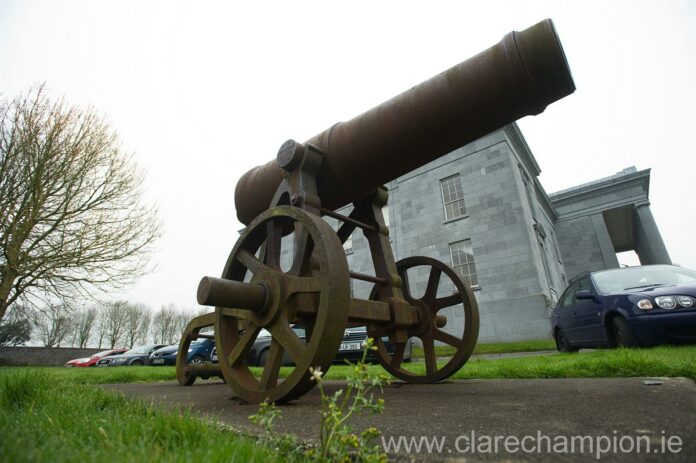David Duggan
ALMOST every town and city in Ireland has a recognisable symbol or emblem that best represents them. When you think of Dublin, you think of O’Connell Bridge or the GPO. When you think of Galway, you think of Eyre Square.
The statue of Daniel O Connell, which stands high above Ennis on a pedestal, also became a trademark for the town and just like Belfast City Hall it was an established rallying point, which it has still remained up to the present day.
The monument was constructed by William Carroll, a local builder and contractor, whose work can be seen thought town, which includes the Cathedral tower, the Franciscan Friary and several bridges which are still all in use today.
The notion that nothing was ever built with out controversy is appropriate when discussing the construction of the O’Connell monument, which was completed fully in 1865. Prior to its construction, the courthouse was the trademark of the town and was the emblem of British law and power.
In January of 1858, Mr. J. D. Fitzgerald, Attorney General for Ireland and MP for Clare, accepted the British Governments offer of a large Russian gun as a prize trophy of the recently concluded, Crimean War (1853 -1856). Its presence in the most powerful part of Ennis had brought outrage as the towns people believed that “the gun”, in front of the courthouse, was a further symbol of British domination and that its presence at the site of O’Connell’s great victory of 1828 was a smear on his great achievements.
The Clare Journal published a long list of names, which included nobility, gentry, farmers and working class that descended to the courthouse on the March 17, 1858 for a public meeting for the purpose of erecting a national monument to the great Daniel O’Connell.
The speeches were of highly intensified national rhetoric and also broke into the spectrum of the achievements of Catholic Emancipation. It seems as if the idea of erecting a monument was a snap reaction to the placing of the “Russian gun” at the courthouse, which is still standing outside the courthouse at the Steels Terrace side to this very day.
In almost every edition of the Clare Journal from 1858 to 1865, there was a long list of subscribers’ names and what they have donated to the construction costs. An anonymous open letter to the editor of the Clare Journal in 1863 highlighted that it was taking far too long for the final collections to be completed and urged real supporters of the great liberator for one last effort in funding the costs since it had been five years and seven months since the great meeting outside the courthouse.
On October 3 the monument was officially unveiled at the newly named O’Connell square and the main speech was given by Mr. Michael Kerin. In one line of the speech, Kerin gives an eternal connection between the people of Ennis and the monument that stands tall over our town to this very day,
A few friends of O’Connell have subscribed but it was the pence and schillings of the poor people of Ennis that has really accomplished the work. (loud cheers)
The local Belfast people saw their Hall as a link to the British crown and celebrated and protested in the name of Unionism in its surroundings. The local people of Ennis saw O’Connell’s monument as a symbol of freedom from religious oppression and it is also the scene of other great leaders rallying for freedom such as Eamon De Valera in 1917 and many others.
With tensions so high in the Crimean area of Ukraine at the time of writing, it is poignant that such a small trophy from that battle of 1853, endeared the people of Ennis to construct the O’Connell Monument.
David Duggan is a history graduate from Knoppogue, Quin.
A native of Ennis, Colin McGann has been editor of The Clare Champion since August 2020. Former editor of The Clare People, he is a journalism and communications graduate of Dublin Institute of Technology.


